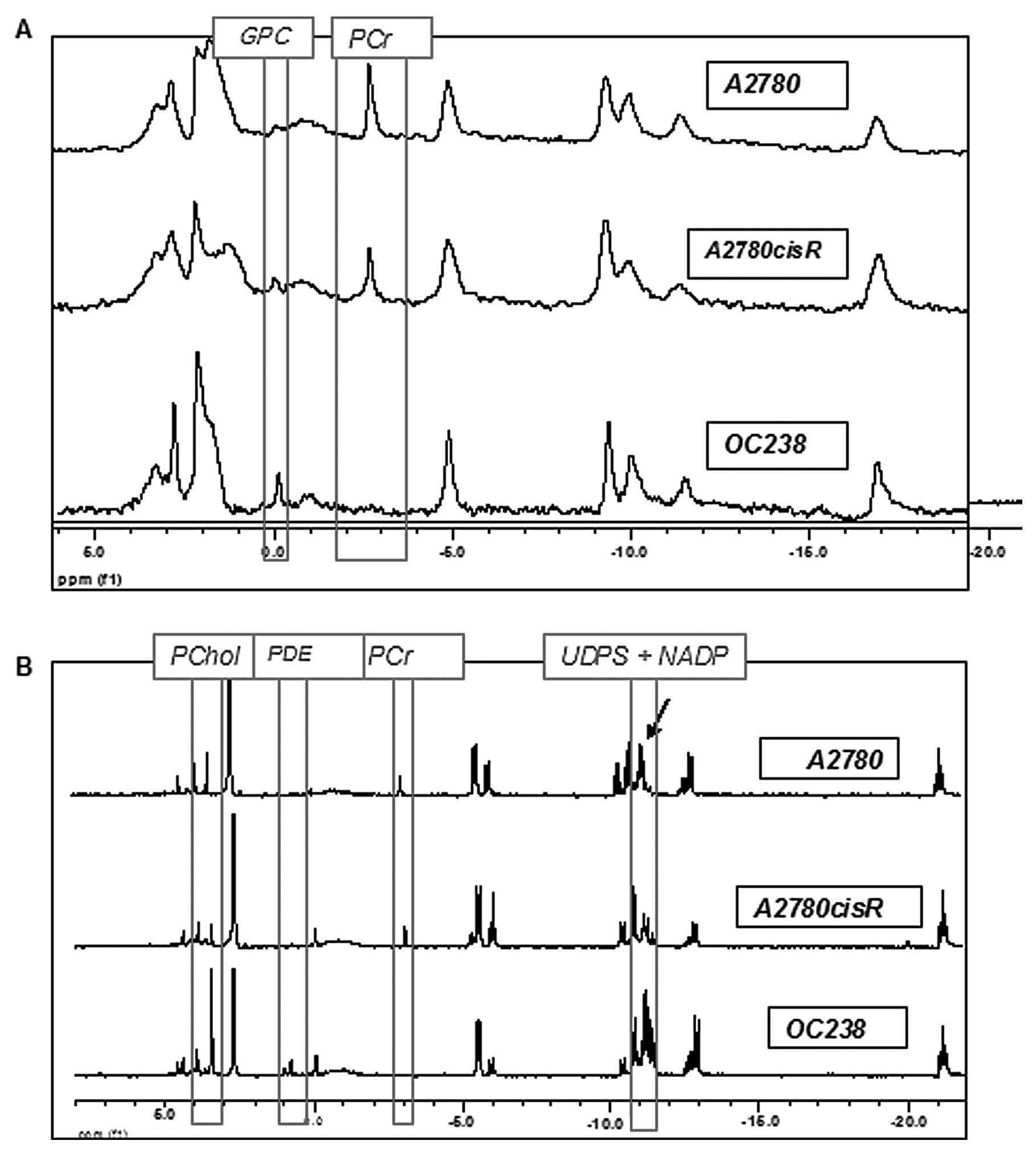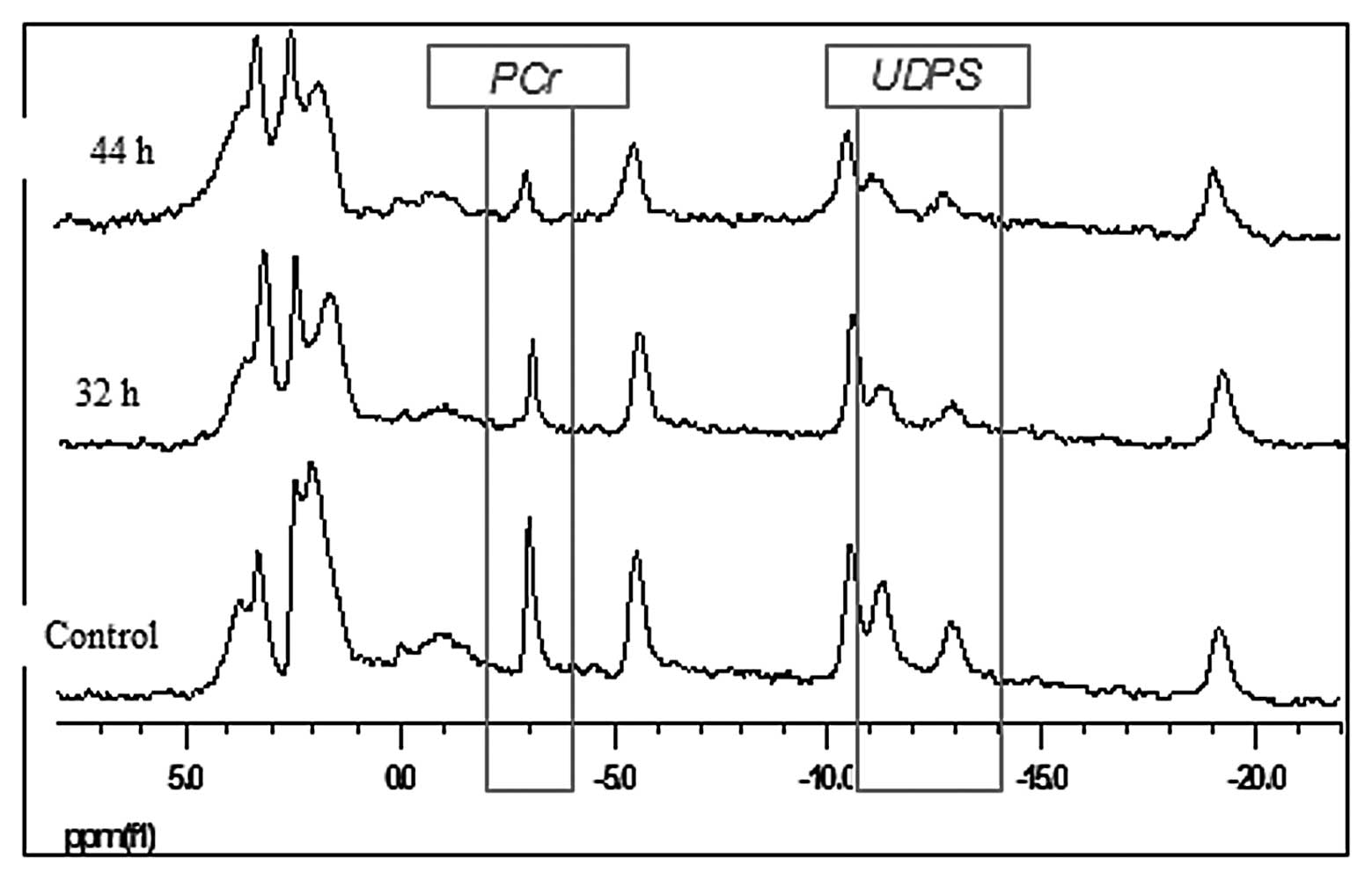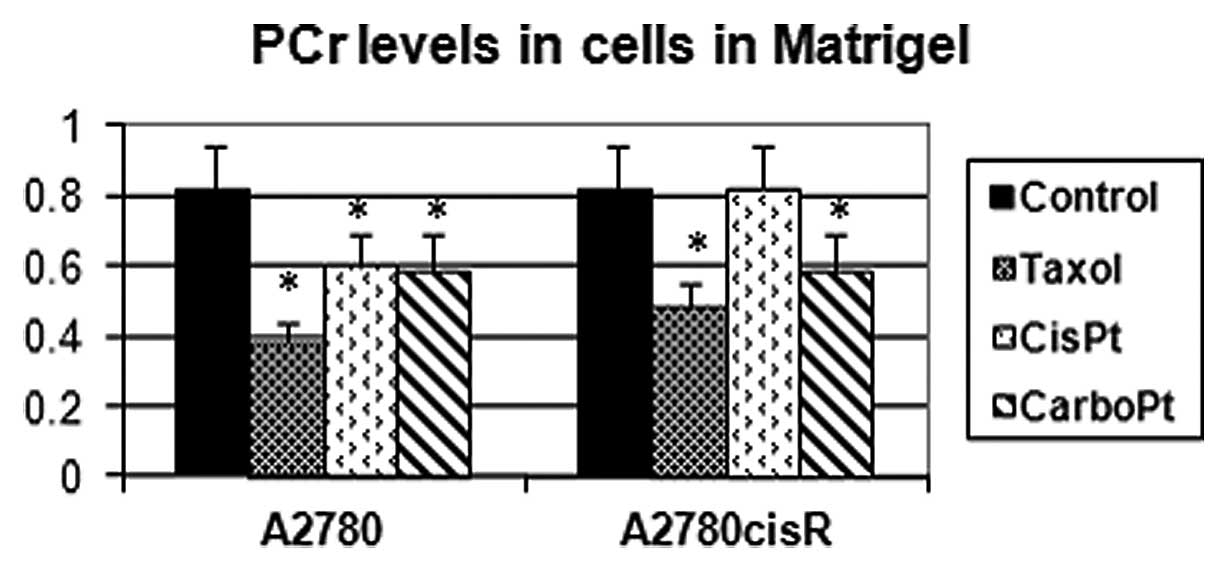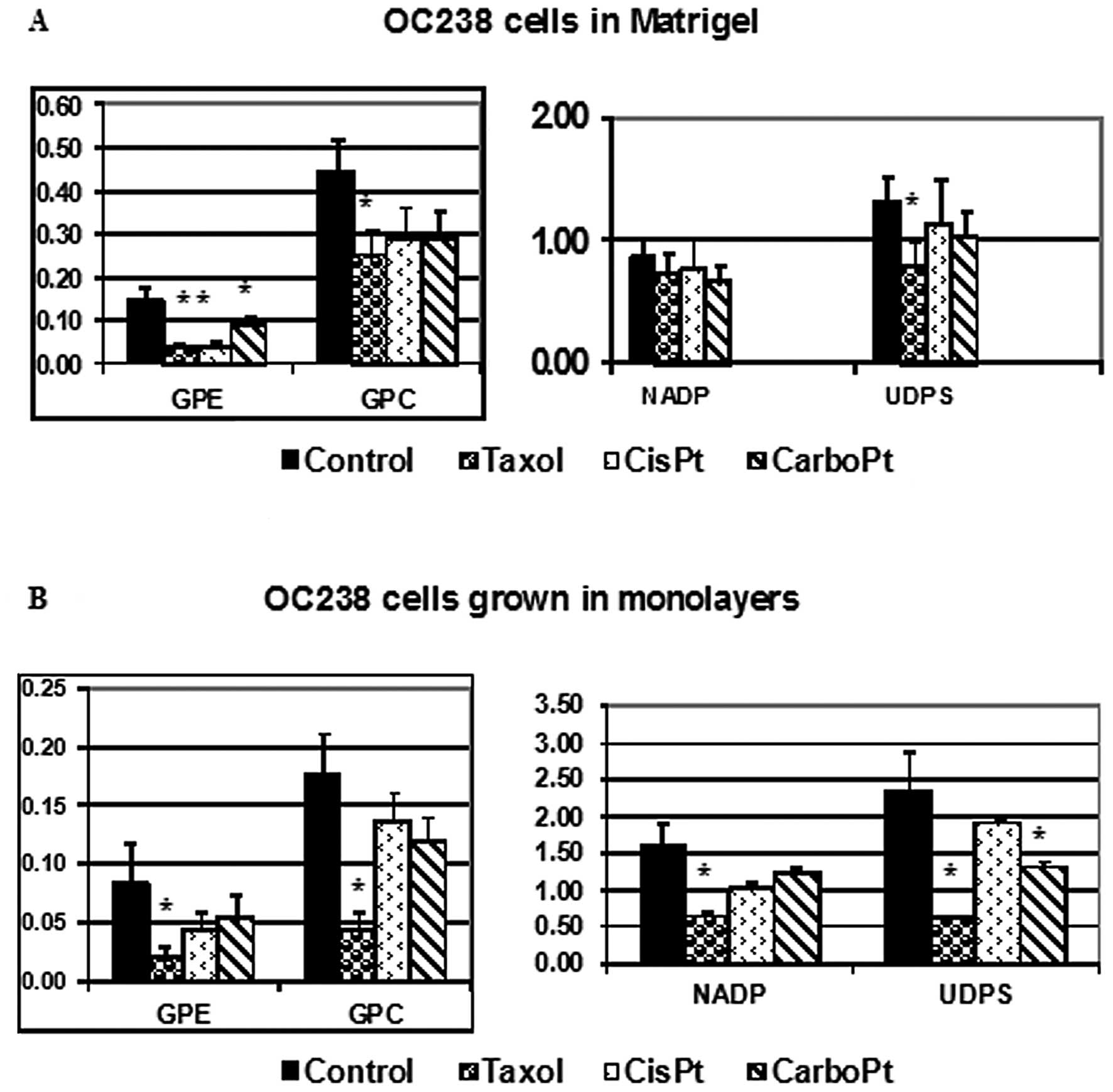|
1
|
National Cancer Institute. www.cancer.gov/cancertopics/types/ovarianurisimplewww.cancer.gov/cancertopics/types/ovarian.
A snapshot of ovarian cancer. Last updated, October 2011.
|
|
2
|
Jemal A, Siegel R, Ward E, Hao Y, Xu J and
Thun MJ: Cancer statistics 2009. CA Cancer J Clin. 59:225–249.
2009. View Article : Google Scholar
|
|
3
|
Bast RC, Hennessy B and Mills GB: The
biology of ovarian cancer: new opportunities for translation. Nat
Rev Cancer. 9:415–428. 2009. View
Article : Google Scholar : PubMed/NCBI
|
|
4
|
Chi DS, Eisenhauer EL, Zivanovic O, et al:
Improved progression-free and overall survival in advanced ovarian
cancer as a result of a change in surgical paradigm. Gynecol Oncol.
114:26–31. 2009. View Article : Google Scholar
|
|
5
|
Ng TC and Glickson JD: Shielded solenoidal
probe for in vivo NMR studies of solid tumors. Magnet Reson Med.
2:169–175. 1985. View Article : Google Scholar : PubMed/NCBI
|
|
6
|
Glickson JD, Evanochko WT, Sakai TT and Ng
TC: In vivo NMR studies of RIF-1 tumors. Magnetic Resonance in
Cancer. Allen PS, Boisvert DPJ and Lentie BC: Pergamon Press;
Toronto: pp. 71–82. 1986
|
|
7
|
Maris JM, Evans AE, McLaughlin AC, D’Angio
GJ, Bolinger L, Manos H and Chance B: 31P nuclear magnetic
resonance spectroscopic investigation of human neuroblastoma in
situ. N Engl J Med. 312:1500–1505. 1985. View Article : Google Scholar : PubMed/NCBI
|
|
8
|
Evanochko WT, Ng TC, Lilly MB, Lawson AJ,
Corbett TH, Durant JR and Glickson JD: In vivo 31P NMR
study of the metabolism of murine mammary 16/C adenocarcinoma and
its response to chemotherapy, x-radiation, and hyperthermia. Proc
Natl Acad Sci USA. 80:334–338. 1983.
|
|
9
|
Okunieff PG, Koutcher JA, Gerweck L,
McFarland E, Hitzig B, Urano M, Brady T, Neuringer L and Suit HD:
Tumor size dependent changes in a murine fibrosarcoma: use of in
vivo 31P NMR for non-invasive evaluation of tumor
metabolic status. Int J Radiat Oncol Biol Phys. 12:793–799. 1986.
View Article : Google Scholar : PubMed/NCBI
|
|
10
|
Ng TC, Evanochko WT, Hiramoto RN, Chanta
VK, Lilly MB, Lawson AJ, Corbett TH, Durant JR and Glickson JD: P
NMR spectroscopy of in vivo tumors. J Magnet Res. 49:271–286.
1986.
|
|
11
|
Sterin M, Cohen JS, Mardor Y, Berman E and
Ringel I: Levels of phospholipid metabolites in breast cancer cells
treated with antimitotic drugs: a 31P-magnetic resonance
spectroscopy study. Cancer Res. 61:7536–7543. 2001.PubMed/NCBI
|
|
12
|
Massuger LFAG, van Vierzen PBJ, Engelke U,
Heerschap A and Wevers R: 1H-magnetic resonance spectroscopy: a new
technique to discriminate benign from malignant ovarian tumors.
Cancer. 82:1726–1730. 1998. View Article : Google Scholar : PubMed/NCBI
|
|
13
|
Boss EA, Moolenaar SH, Massuger LF,
Boonstra H, Engelke UF, de Jong JG and Wevers RA: High-resolution
proton nuclear magnetic resonance spectroscopy of ovarian cyst
fluid. NMR Biomed. 13:297–305. 2000. View Article : Google Scholar : PubMed/NCBI
|
|
14
|
Yamada KM and Cukierman E: Modeling tissue
morphogenesis and cancer in 3D. Cell. 130:601–610. 2007. View Article : Google Scholar : PubMed/NCBI
|
|
15
|
Ritter CA, Perez-Torres M, Rinehart C,
Guix M, Dugger T, Engelman JA, et al: Human breast cancer cells
selected for resistance to trastuzumab in vivo overexpress
epidermal growth factor receptor and ErbB ligands and remain
dependent on the ErbB receptor network. Clin Cancer Res.
13:4909–4919. 2007. View Article : Google Scholar
|
|
16
|
Cohen JS, Jaroszewski JW, Kaplan O,
Ruiz-Cabello J and Collier S: A history of biological applications
of NMR spectroscopy. J Prog Nucl Magn Reson Spectrosc. 28:53–85.
1995. View Article : Google Scholar
|
|
17
|
Maymon R, Bar-Shira Maymon B, Holzinger M,
Tartakovsky B and Leibovici J: Augmentative effects of
intracellular chemotherapy penetration combined with hyperthermia
in human ovarian cancer cells lines. Gynecol Oncol. 55:265–270.
1994. View Article : Google Scholar
|
|
18
|
Podo F: Tumor phospholipid metabolism. NMR
Biomed. 12:413–439. 1999. View Article : Google Scholar
|
|
19
|
Nakayama S and Clark JF: Smooth muscle and
NMR review: an overview of smooth muscle metabolism. Mol Cell
Biochem. 244:17–30. 2003. View Article : Google Scholar : PubMed/NCBI
|
|
20
|
Cho KR and Shih IeM: Ovarian cancer. Annu
Rev Pathol. 4:287–313. 2009. View Article : Google Scholar
|
|
21
|
Berek JS and Bast RCJ: Ovarian cancer.
Cancer Medicine. Kufe DW, Pollack RE, Weichselbaum RR, Bast RCJ,
Gansler TS, Holland JF and Frei EI: 6th edition. BC Decker;
Hamilton, Ontario: pp. 1831–1861. 2003
|
|
22
|
Mackinnon WB, Russell P, May GL and
Mountford CE: Characterization of human ovarian epithelial tumors
(ex vivo) by proton magnetic resonance spectroscopy. Int J Gynecol
Cancer. 5:211–221. 1995. View Article : Google Scholar : PubMed/NCBI
|
|
23
|
Wallace JC, Raaphorst GP, Somorjai RL, Ng
CE, Fung Kee Fung M, Senterman M and Smith IC: Classification of
1H MR spectra of biopsies from untreated and recurrent
ovarian cancer using linear discriminant analysis. Magn Reson Med.
38:569–576. 1997.
|
|
24
|
Kim JB: Three-dimensional tissue culture
models in cancer biology. Semin Cancer Biol. 15:365–377. 2005.
View Article : Google Scholar : PubMed/NCBI
|
|
25
|
Debnath J and Brugge JS: Modelling
glandular epithelial cancers in three-dimensional cultures. Nat Rev
Cancer. 5:675–688. 2005. View Article : Google Scholar : PubMed/NCBI
|
|
26
|
Lee GY, Kenny PA, Lee EH and Bissell MJ:
Three-dimensional culture models of normal and malignant breast
epithelial cells. Nat Methods. 4:359–365. 2007. View Article : Google Scholar : PubMed/NCBI
|
|
27
|
Streuli CH, Schmidhauser C, Bailey N, et
al: Laminin mediates tissue-specific gene expression in mammary
epithelia. J Cell Biol. 129:591–603. 1995. View Article : Google Scholar : PubMed/NCBI
|
|
28
|
Debnath J, Mills KR, Collins NL, Reginato
MJ, Muthuswamy SK and Brugge JS: The role of apoptosis in creating
and maintaining luminal space within normal and oncogene-expressing
mammary acini. Cell. 111:29–40. 2002. View Article : Google Scholar : PubMed/NCBI
|
|
29
|
Ohmori T, Yang JL, Price JO and Arteaga
CL: Blockade of tumor cell transforming growth factor-beta enhances
cell cycle progression and sensitizes human breast carcinoma cells
to cytotoxic chemotherapy. Exp Cell Res. 245:350–359. 1998.
View Article : Google Scholar : PubMed/NCBI
|
|
30
|
Ruiz-Cabello J, Berghmans K, Kaplan O,
Lippman ME, Clarke R and Cohen JS: Hormone dependence of breast
cancer cells and the effects of tamoxifen and estrogen:
31P NMR studies. Breast Cancer Res Treat. 33:209–217.
1995. View Article : Google Scholar : PubMed/NCBI
|
|
31
|
Pike MC, Kredich NM and Snyderman R:
Influence of cytoskeletal assembly on phosphatidylcholine synthesis
in intact phagocytic cells. Cell. 20:373–379. 1980. View Article : Google Scholar : PubMed/NCBI
|


















